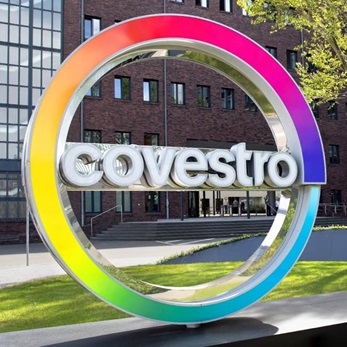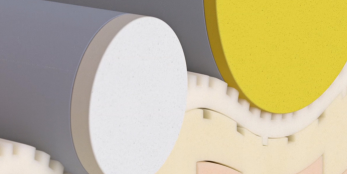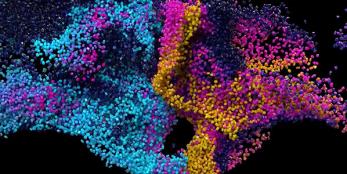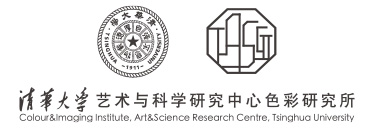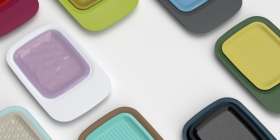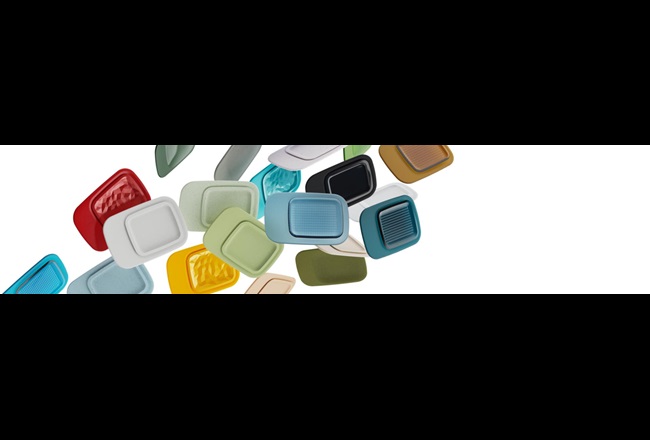
Case study
Award-winning CMF solutions for more sustainable materials
Exploring the synergy of aesthetics and circularity, we are collaborating with academia to create aesthetic design solutions for more sustainable materials based on their sustainability attributes.
In collaboration with the Colour & Imaging Institute of Tsinghua University’s Arts & Science Research Centre, we have developed aesthetic design solutions for more sustainable materials, aiming to address challenges in industrial design and product development using these materials.
The empirical project is based on research findings, designs, and experiments. It aims to integrate aesthetic CMF (Color, Material, Finish) design into Covestro's more sustainable polycarbonate portfolio and promote a design approach that merges aesthetic and circular design.
The empirical project is based on research findings, designs, and experiments. It aims to integrate aesthetic CMF (Color, Material, Finish) design into Covestro's more sustainable polycarbonate portfolio and promote a design approach that merges aesthetic and circular design.
While the environmental benefits and technical performance of more sustainable materials like recycled plastics are widely researched, understanding their sensory properties and emotional impact remains a challenge. Research is needed to explore how people perceive and appreciate these materials from both aesthetic and sustainability perspectives. This deeper understanding would help differentiate more sustainable plastics through their visual and tactile qualities, ultimately supporting broader market adoption.
To achieve a fully circular economy, it is essential to harmonize circular design with aesthetic innovation. This requires a holistic approach that balances visual appeal with environmental impact, ensuring that more sustainable plastics, such as post-consumer recycled (PCR) polycarbonates, evoke an emotional connection with consumers. By addressing these challenges, the plastics industry can create solutions that not only meet sustainability criteria but also resonate on a deeper, more personal level.
To achieve a fully circular economy, it is essential to harmonize circular design with aesthetic innovation. This requires a holistic approach that balances visual appeal with environmental impact, ensuring that more sustainable plastics, such as post-consumer recycled (PCR) polycarbonates, evoke an emotional connection with consumers. By addressing these challenges, the plastics industry can create solutions that not only meet sustainability criteria but also resonate on a deeper, more personal level.
Our understanding of more sustainable materials is constantly evolving and becoming increasingly holistic. To fully maximize their potential, we must take aesthetic design into consideration, elevating their visual appeal and exploring new commercial development models.
Our collaboration with the Colour & Imaging Institute of Tsinghua University's Arts & Science Research Centre has resulted in a Good Design Award-winning innovation that transforms more sustainable materials into premium design elements.
Through consumer surveys, expert interviews, and comprehensive market analysis, we've created five distinctive nature-inspired themes-Earth, Water, Stone, Gem, and Black & White-that celebrate rather than hide the unique qualities of more sustainable materials like recycled polycarbonates.
These CMF concepts balance aesthetics, performance, and sustainability, transforming recycled polycarbonates into materials with a distinctive identity that consumers actively seek out. By highlighting the distinctive visual and tactile qualities of more sustainable plastics, we're helping brands position them as a premium feature rather than a compromise.
The Good Design Award recognition validates our approach to harmonizing circular design with aesthetic innovation—proving that more sustainable materials can deliver both environmental benefits and the emotional resonance necessary for broader market adoption and a truly circular future.
Through consumer surveys, expert interviews, and comprehensive market analysis, we've created five distinctive nature-inspired themes-Earth, Water, Stone, Gem, and Black & White-that celebrate rather than hide the unique qualities of more sustainable materials like recycled polycarbonates.
These CMF concepts balance aesthetics, performance, and sustainability, transforming recycled polycarbonates into materials with a distinctive identity that consumers actively seek out. By highlighting the distinctive visual and tactile qualities of more sustainable plastics, we're helping brands position them as a premium feature rather than a compromise.
The Good Design Award recognition validates our approach to harmonizing circular design with aesthetic innovation—proving that more sustainable materials can deliver both environmental benefits and the emotional resonance necessary for broader market adoption and a truly circular future.
Drawing inspiration from the research of traditional oriental culture, we've infused oriental color aesthetics into more sustainable materials, striking a perfect balance between visual appeal and practicality, ultimately resulting in a more diverse and engaging product experience for users.
Key benefits
- Design freedom Multiple design options for recycled and renewable attributed polycarbonates to meet your circular design needs
- Supporting a Circular Economy Combining aesthetic design with sustainability to help promote the diverse possibilities of a circular economy
- Data-driven approach Using surveys, expert interviews, and Big Data analysis to create color schemes that balance aesthetics, performance, and sustainability
Download
-
The Aesthetics of Sustainability
-
Sustainability CMF Design Solutions
Publishing date: Oct 16, 2025

